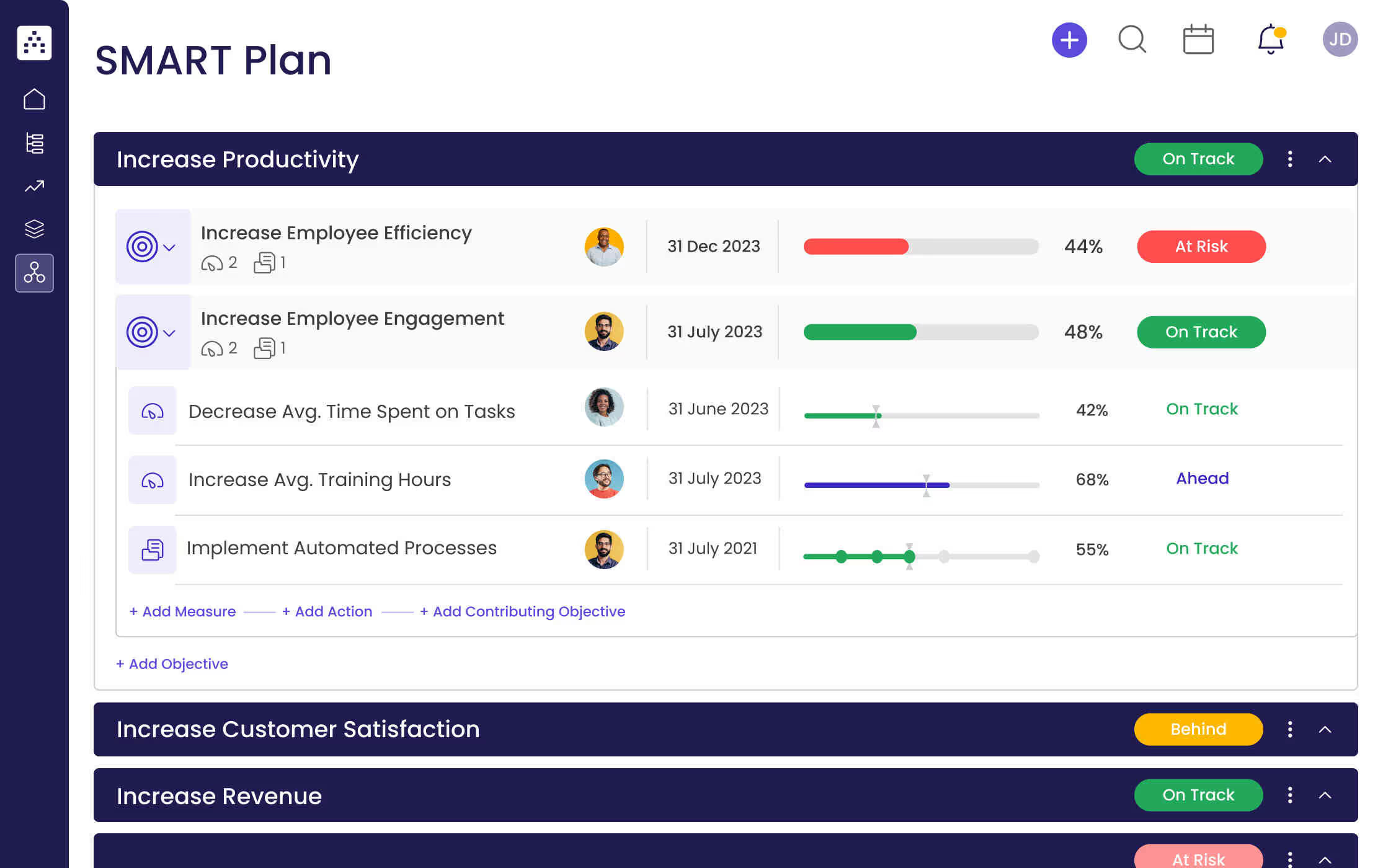What is a SMART Plan?
A SMART plan is a strategic planning framework used to create specific, measurable, achievable, relevant, and time-bound goals. It helps individuals, teams, and organizations develop a plan of action to achieve their desired outcomes. The acronym SMART stands for Specific, Measurable, Achievable, Relevant, and Time-bound, and each element is important in creating a successful plan. The goal of a SMART plan is to ensure your goals are realistic and attainable, so you can stay focused and on track with your objectives.
What's included in this SMART Plan template?
- 3 focus areas
- 6 objectives
- 6 projects
- 6 KPIs
Each focus area has its own objectives, projects, and KPIs to ensure that the strategy is comprehensive and effective.
Who is the SMART Plan template for?
The SMART plan template is for teams and organizations in any industry looking to create specific, measurable, achievable, relevant, and time-bound goals. The template provides a structured process for developing strategies that are tailored to your objectives and goals. It helps ensure that your plans are measurable and achievable, so you can be successful in achieving your desired outcomes.
1. Define clear examples of your focus areas
The first step in the SMART plan template is to define your focus areas. These are the broad topics or areas that you want to address. It could be anything from increasing productivity, to improving customer satisfaction, to increasing revenue. By defining your focus areas, you can begin to create objectives and actions that are tailored to achieve your desired outcomes.
2. Think about the objectives that could fall under that focus area
Once you have identified your focus areas, you can then think about the objectives that could fall under each focus area. Objectives are specific targets that you want to work toward, such as increasing employee efficiency or improving customer experience. For each objective, you can then create a set of actions and measures to help you reach those objectives.
3. Set measurable targets (KPIs) to tackle the objective
For each objective, you will need to set measurable targets, known as Key Performance Indicators (KPIs). These are measurable targets that you can track to ensure you are making progress towards your objectives. Examples of KPIs could include decreasing the average time spent on tasks, increasing the average training hours, or increasing the average price per unit.
4. Implement related projects to achieve the KPIs
Once you have set measurable targets, you can then identify and implement related projects to help you reach those targets. These projects are actions you can take to help you achieve your KPIs. For example, if you wanted to increase employee efficiency, you could implement automated processes. Or if you wanted to increase customer retention, you could improve customer service.
5. Utilize Cascade Strategy Execution Platform to see faster results from your strategy
The Cascade Strategy Execution Platform is a powerful tool that helps teams and organizations create and manage their strategic plans. It provides an easy-to-use template to help you define your focus areas, objectives, actions, and measures. It also provides powerful analytics and insights to help you track your progress and ensure you are on track to reach your desired outcomes.


